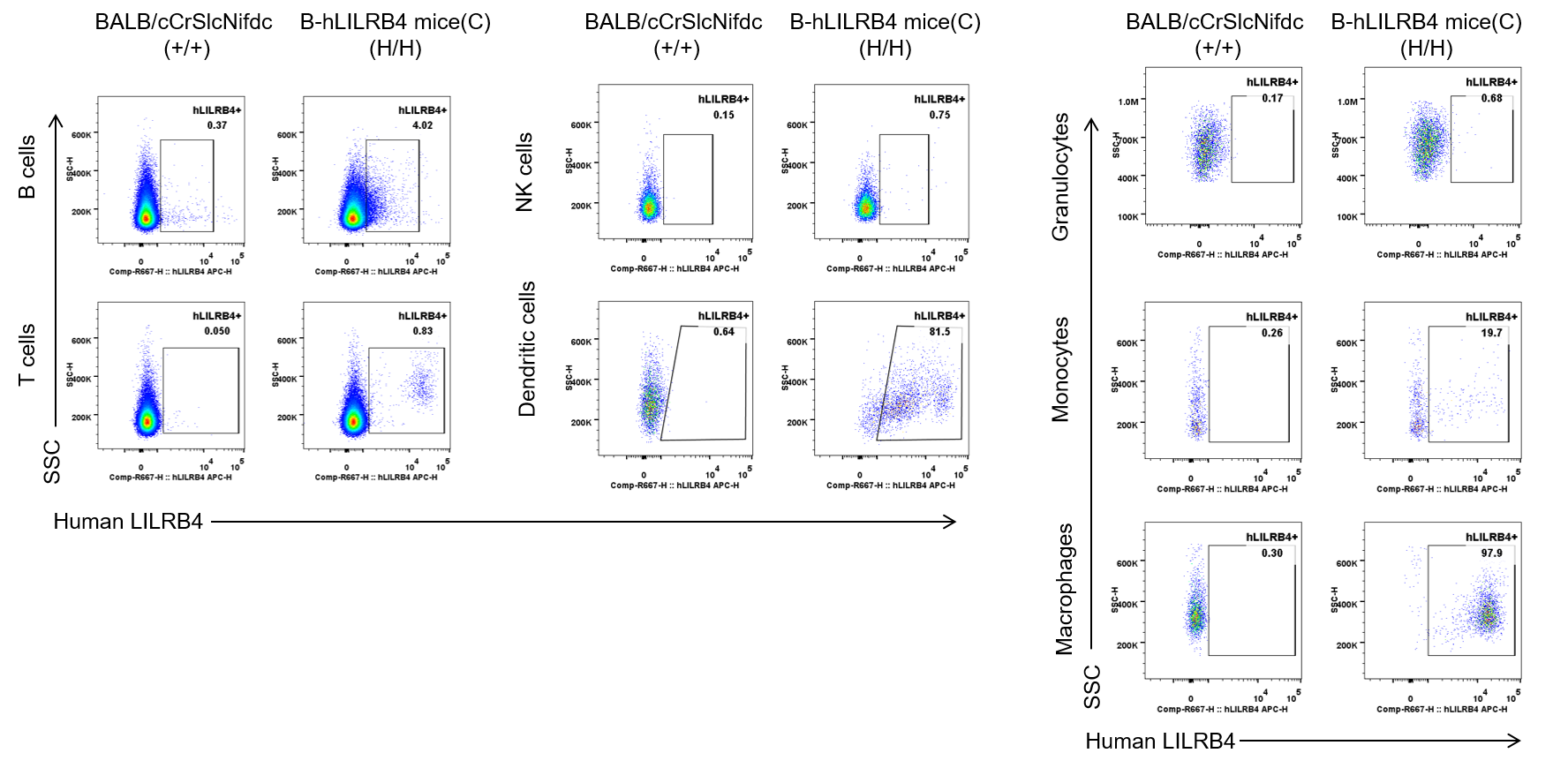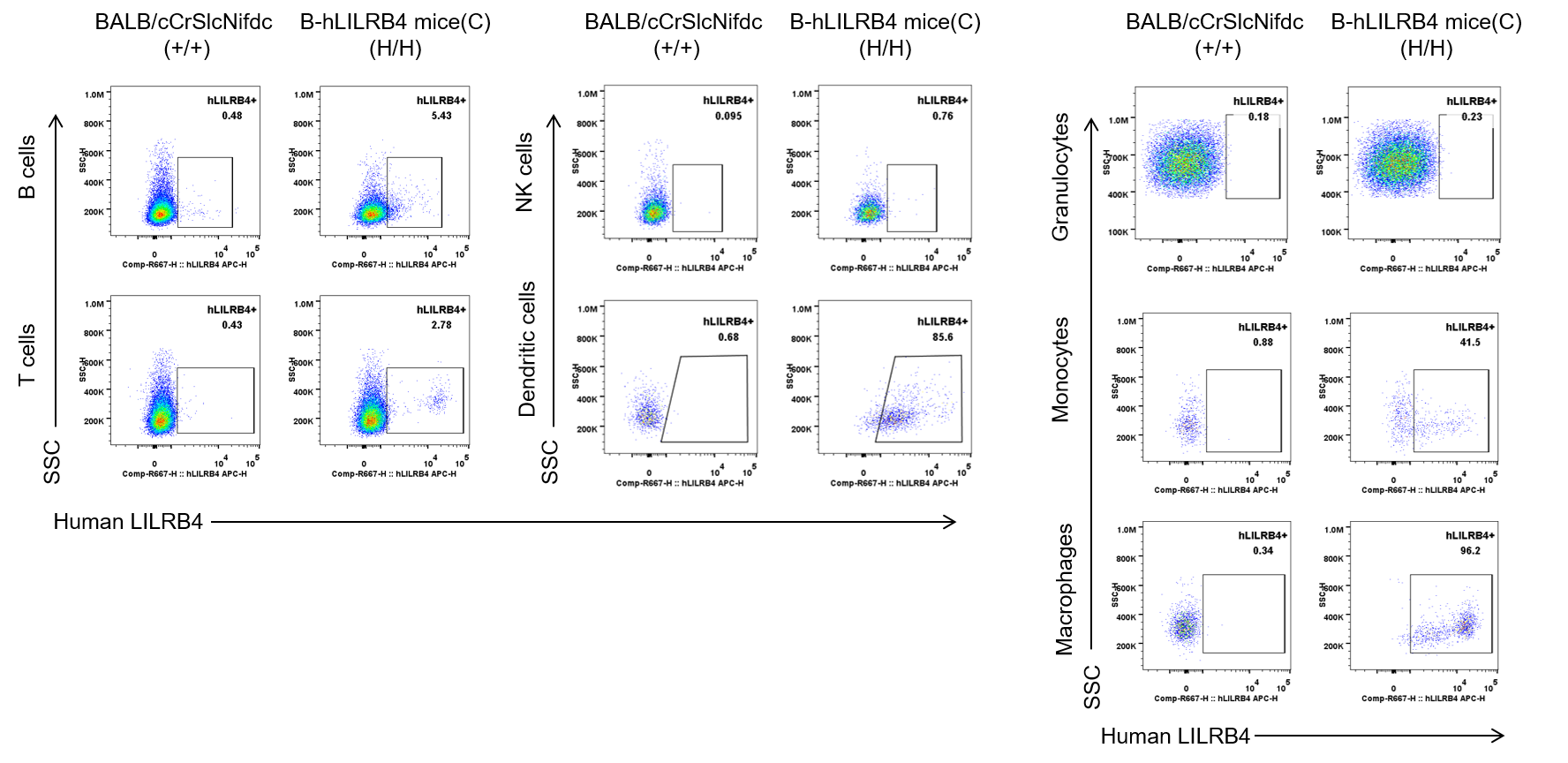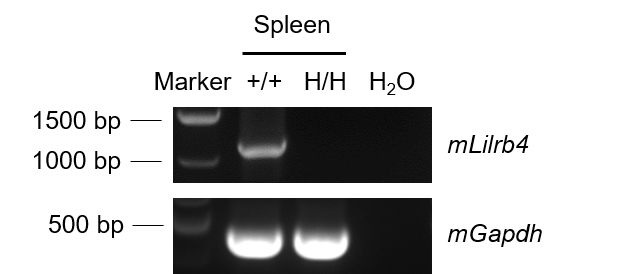
BALB/cCrSlcNifdc-Lilrb4atm1(LILRB4)Bcgen Lilrb4btm1Bcgen/Bcgen • 113619
Gene targeting strategy for B-hLILRB4 mice(C). The mouse Lilrb4a and Lilrb4b gene are replaced by the exons 1-12 of human LILRB4 gene that encode signal peptide, extracellular domain, transmembrane domain, and cytoplasmic region in B-hLILRB4 mice(C). The promoter and 3’ or 5’UTR region also belongs to human. The human LILRB4 expression is driven by human LILRB4 promoter, while mouse Lilrb4 gene transcription and translation will be disrupted.

Strain specific LILRB4 expression analysis in homozygous B-hLILRB4 mice(C) by flow cytometry. Splenocytes were collected from wild-type BALB/cCrSIcNifdc mice (+/+) and humanized B-hLILRB4 mice(C) (H/H) and analyzed by flow cytometry with species-specific anti-human LILRB4 antibody (Biolegend, 333016). Human LILRB4 was detectable in dendritic cells, monocytes, macrophages, T cells and B cells (low) of humanized B-hLILRB4 mice(C), but not in NK cells and granulocytes. The human LILRB4 was not expression in wild-type BALB/cCrSIcNifdc mice.

Strain specific LILRB4 expression analysis in homozygous B-hLILRB4 mice(C) by flow cytometry. Blood cells were collected from wild-type BALB/cCrSIcNifdc mice (+/+) and humanized B-hLILRB4 mice(C) (H/H) and analyzed by flow cytometry with species-specific anti-human LILRB4 antibody (Biolegend, 333016). Human LILRB4 was detectable in dendritic cells, monocytes, macrophages, T cells and B cells (low) of humanized B-hLILRB4 mice(C), but not in NK cells and granulocytes. The human LILRB4 was not expression in wild-type BALB/cCrSIcNifdc mice.

Strain specific analysis of Lilrb4 mRNA expression in wild-type BALB/cCrSIcNifdc and B-hLILRB4 mice(C) by RT-PCR. Spleen RNA were isolated from wild-type BALB/cCrSIcNifdc (+/+) and homozygous B-hLILRB4 mice(C) (H/H), then cDNA libraries were synthesized by reverse transcription, followed by PCR with mouse Lilrb4 primers. Mouse Lilrb4 mRNA was detectable in wild-type BALB/cCrSIcNifdc mice, but not in B-hLILRB4 mice(C).